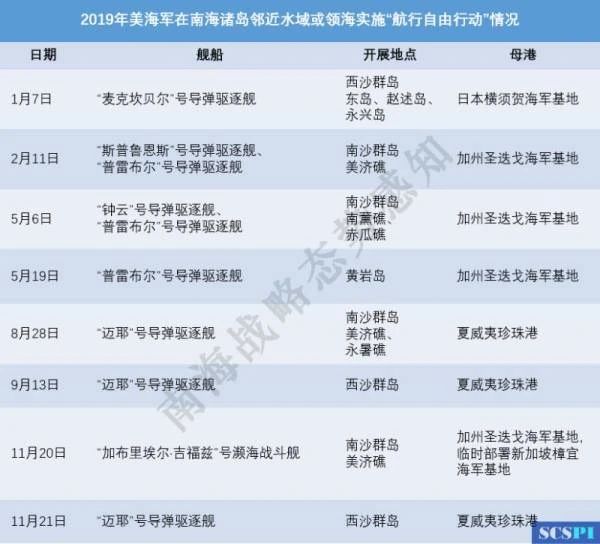On April 7, 2020, the online Seminar on US Army Operations and the Situation in the South China Seawas jointly hosted by Tsinghua University’s Center for International Security and Strategy (CISS), China Forum, and Peking University’s Center for Maritime Strategy Studies (CMSS). This is also the 9th Security and Strategy Seminar of CISS.
The seminar was co-chaired by YAO Yunzhu, CISS Academic Committee member, AN Gang, CISS senior fellow, and HU Bo, CMSS director. A panel of 18 experts and scholars attending the conference includes CHEN Xiaogong and ZHANG Tuosheng, both CISS Academic Committee members; DA Wei, CISS senior fellow; WU Shicun, president of the National Institute for South China Sea Studies; ZHU Feng, executive director of the Collaborative Innovation Center of South China Sea Studies at Nanjing University; CUI Yiliang, editor-in-chief of Modern Ships; QI Haotian, assistant professor at the School of International Studies, Peking University; LI Chen, associate professor at the School of International Studies, Renmin University of China; CHEN Yong, assistant researcher at Shanghai Academy of Social Sciences, etc.
Deliberations at the seminar centered on An Incomplete Report on US Military Activities in the South China Sea in 2019 (link attached) released on March 28 by the South China Sea Strategic Situational Probing Initiative (SCSPI), and in-depth discussions were conducted on the trends and impact of US military activities in the South China Sea.
Experts at the conference believed that An Incomplete Report on US Military Activities in the South China Sea in 2019 was compiled by SCSPI members based on open source information from the US military. SCSPI members continue to track the deployment of US armed forces in the South China Sea including those on large surface ships, underwater nuclear submarines, and the Coast Guard, as well as its large-scale military exercises and assistance, and so forth. The report, persisting in exploring open source data, information as well as objective situation analysis and presented with figures and graphs, has received resonance both home and abroad.

An Incomplete Report on US Military Activities in the South China Sea in 2019 by SCSPI
Experts pointed out that in recent years, US military operations against China in the South China Sea have been significantly reinforced in terms of frequency. Since 2010, there has been a rapid upward trend in US military activities in this region including frontier deployments, reconnaissance, and freedom of navigation operations (FONOPs). Especially since 2018, US military moves have been unprecedented. Over the past 10 years and more, its reconnaissance operations have doubled, the presence of its warships at the front has increased by 60%, and operations such as FONOPs and Continuous Bomber Presence have intensified unprecedentedly. This trend will not stop; it will only grow stronger in the future.

US FONOPs near China’s stationed islands/reefs in the South China Sea in 2019
Despite markedly intensified US military operations in the South China Sea in terms of riskiness and aggressiveness, experts at the meeting agreed that in the short term, there will be no significant increase in its investment in military strength by the US armed forces. The US Department of Defense’s Europe-focused funding will remain larger than that for the Indo-Pacific region in the short term, and the impact of the Covid-19 pandemic will also affect US military mobilization at the next stage. Nevertheless, the United States still attaches great importance to maintaining its military operational capabilities in the Asia-Pacific region, which is demonstrated in the dismissal of the commanding officer of USS Theodore Roosevelt.
In addition, major US allies in the Asia-Pacific region are unwilling to engage in direct military conflicts with China. Most countries are reluctant to “take their sides” in the competition between China and the US. The defense relationship between the US and its allies does not obligate direct participation or support for the US armed forces in its military operations in the South China Sea. The Philippines, for instance, has unequivocally refused to be involved in the possible conflict between China and the US in this region.

A picture in March 2020 featuring aircraft carrier USS Theodore Roosevelt, amphibious assault ship USS America, and amphibious transport dock USS Green Bay with three frigates. (Source: US Navy)
Some experts believe that the situation between China and the US in the South China Sea has taken shape into a strategic stalemate, with the US military regarding its activities in this region as an important part of enacting military competition with China. In the future, its China strategy in the region will mainly be one of containment and pushback. It will seek an encircling deployment in the South China Sea and strengthen defense partnerships with Southeast Asian countries.
Whether China and the US can achieve a peaceful maritime coexistence in the future depends on three decisive factors. It first depends on whether the two countries can reach a consensus on the power distribution and strategic pattern in the western Pacific. The second aspect is whether both sides can remain rational and undisturbed by third-party factors. The last key is whether they can form a common code of maritime conduct and define necessary boundaries regarding military activities in the South China Sea. At present, it is still necessary for both sides to enhance crisis prevention and control during current competition.
The Weekend Forum on Security and Strategy—CISS’s brand forum—regularly invites Chinese experts and scholars from various fields for discussions on subjects of interest concerning strategy and security. Previous topics include Sino-US relations, international strategy and security situation, the Belt and Road Initiative, China's global image and international communication, etc.
Attachment: An Incomplete Report on US Military Activities in the South China Sea in 2019
